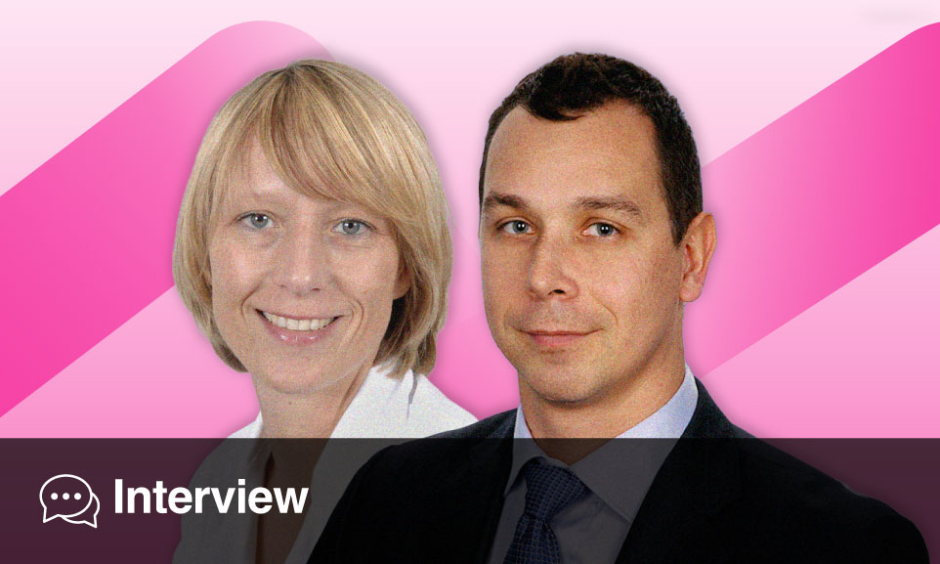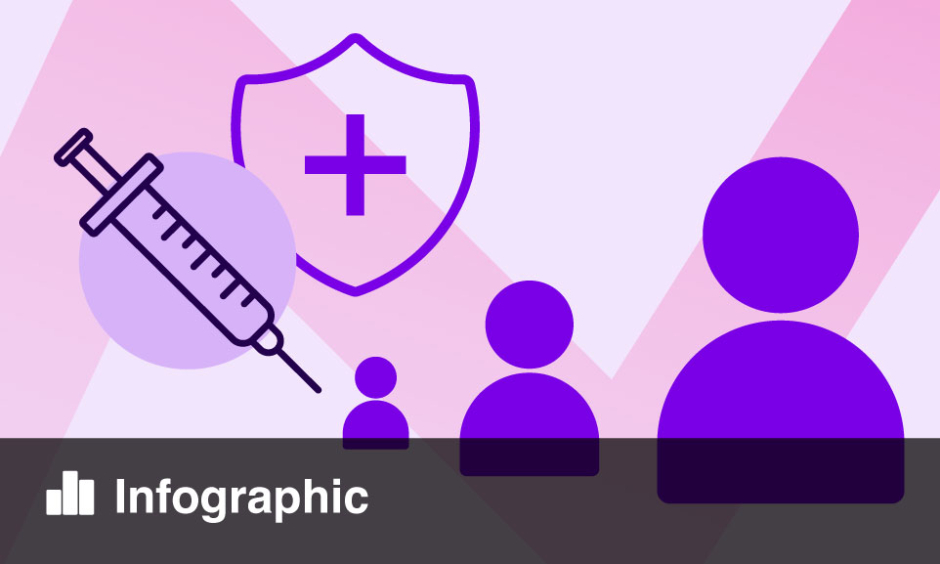Miłosz Parcewski | President of the European AIDS Clinical Society (EACS); Head – Department of Infectious Diseases, Pomeranian Medical University in Szczecin, Poland
Anne-Marie Wensing | Secretary of the European AIDS Clinical Society (EACS); Clinical Virologist, University Medical Center Utrecht, the Netherlands; Honorary Professor, Ezintsha, Johannesburg; Department of Health, University of the Witwatersrand, Johannesburg, South Africa
Citation: EMJ Microbiol Infect Dis. 2025;6[Suppl 4]:31-34. https://doi.org/10.33590/emjmicrobiolinfectdis/LKZI1857
![]()
As leaders of the European AIDS Clinical Society (EACS), how do you see the Society shaping HIV care and research over the next few years? Are there any new priorities or initiatives that you are particularly excited about?
Parczewski: As the current EACS President, and the first from Central and Eastern Europe, I see several priorities for the coming years from this perspective. The HIV epidemic in Central and Eastern Europe continues to expand, and as a Society of strong researchers and clinicians, our goal is to strengthen and connect expertise across European regions. We also want to further involve the community, something we’ve always aimed to do, by building on the expertise of multiple countries, both clinically and scientifically, to excel in patient care delivery. We currently have several projects running. One focuses on standards of care, where we aim to harmonise prevention and treatment across European countries to ensure a minimum standard for HIV care. This includes standards for pre-exposure prophylaxis (PrEP), testing, antenatal screening, treatment, and management of comorbidities. It’s a major, ongoing effort in collaboration with the European Centre for Disease Prevention and Control (ECDC).
We also have other initiatives, such as Women Against Viruses in Europe (WAVE), programmes for young researchers, and clinical exchange programmes, which form the building blocks of our Society. Looking forward, we are planning to establish a virtual clinic, a joint project with Anne-Marie, to provide shared expertise in case by case clinical management across regions. We recognise that the world is changing, with funding cuts and major shifts in HIV prevention and care, such as the introduction of long-acting injectables for both prevention and treatment. We want to ensure that these innovations are implemented equitably across all regions of Europe and, ideally, beyond.
Wensing: I completely agree. What’s especially important now is that there are certain issues that can only be solved at a European level. We must strengthen our collaboration now more than ever. For instance, the migrant issue cannot be addressed by one country alone. We need to take collective European responsibility, as people move across borders and require continuity of care. Finding solutions that move with populations is only possible through European collaboration. Although that can be politically difficult, it’s something that we, clinicians, nurses, and communities, can help achieve. The community has become increasingly vital; they’ve proven capable of setting up initiatives and providing care within their own settings. What truly distinguishes EACS, however, is the way it now tries to connect scientific, clinical, and community perspectives to help shape policy across Europe. This collaborative model. rather than traditional top-down advocacy, is what makes EACS unique among medical societies.
Looking at HIV today, what are the biggest challenges that clinicians and researchers face right now, and where do you see the most progress being made?
Wensing: Population movement has changed everything. Problems that used to be confined to one country no longer are. For example, HIV subtype diversity has evolved: where we used to see subtype B in Europe, C in much of Africa, and AE in Asia, these are now all mixing, reflecting migration of people with HIV. This means that we need to build a more global understanding of HIV together.
Parczewski: From a community perspective, we are also seeing new challenges with changing patient demographics related to migration. Stigma remains a major issue, especially among migrant populations, along with language and cultural barriers that can hinder prevention, testing, and management of comorbidities and sexually transmitted infections. Often, cultural norms make it difficult to talk openly about sexual health. These are challenges we must address as part of the broader movement to improve sexually transmitted infection and HIV care.
Drug resistance continues to be a major concern. How is EACS helping clinicians and researchers keep up with emerging resistance patterns? And are there any recent trends that stand out?
Wensing: Drug resistance has always been a key focus for us, and it’s also my area of expertise. I’ve always felt welcomed within EACS as a clinical virologist. While resistance has become a smaller issue overall, for the people it affects, it remains extremely serious. Because it’s discussed less now, expertise has diminished. In the past, every hospital had its own resistance specialist, but that’s no longer the case. So, we need to share knowledge more broadly. One idea, as Miłosz mentioned, is to establish a virtual clinic. Most individuals with HIV do well and don’t require complex discussions among different specialists, but for the 5–10% who do not, clinicians and nurses across Europe should have access to expert support, even in smaller or remote locations. This would be a very practical way to ensure equal access to specialised knowledge.
Parczewski: There’s also growing anticipation around long-acting PrEP agents, such as lenacapavir and cabotegravir. However, we still lack systematic data on how their widespread use might influence transmitted resistance patterns. Understanding and monitoring this will be a key research priority going forward.
With new tools like long-acting PrEP, HIV prevention has significantly advanced. How do you see these strategies evolving, and what is EACS’s role in ensuring they reach the right populations?
Parczewski: Long-acting PrEP is a powerful tool for ending the HIV epidemic, with strong data from studies such as PURPOSE 1 and 2 on lenacapavir, and HPTN 083 and 084 on cabotegravir. We now have long-acting injectables administered every 2–6 months, with potential for even longer intervals. The challenge is equitable implementation. Access shouldn’t be limited to countries where PrEP is already well established, such as high income countries (e.g. France, UK, USA). We must also reach populations in lower and middle income regions, for example, Ukraine, Belarus, and Russia. Importantly, migrants face increased transmission risk, often both in their home and host countries. As many European countries are classified as middle- to high-income, access to these drugs isn’t prioritised by industry. We need to find new funding models, involving both governments and industry, to ensure that these preventive tools reach those who need them the most.
Wensing: I fully agree. In Africa, global collaborations between governments and organisations have made major projects possible. In Europe, however, we tend to rely on national systems, which are not sufficient for addressing migration and conflict-affected areas. This is a superior prevention method, , and from a human rights perspective, it should be implemented. The question isn’t whether we should, but how we are going to organise it. Funding is important, but the first step is to agree on what’s needed and then find the partners to make it work.
Parczewski: Exactly. According to the latest ECDC report, 36% of new HIV diagnoses are among migrants, which underscores how critical this is. In Poland, we’re seeing a worrying trend of late diagnoses among migrant populations. It’s heartbreaking.
Wensing: Yes, and with the current political climate, many people are becoming more marginalised. If prevention measures aren’t offered openly and safely, people will not be able to protect themselves, making the situation even harder to manage. We must keep this an open and inclusive conversation, even when it’s politically challenging.
HIV is a global issue. How does EACS work with partners around the world to improve treatment access and prevention strategies?
Parczewski: We have a broad network of collaborations, both institutional and professional. We work with the ECDC on joint projects and collaborate with other societies worldwide, for example, with the Japanese Society and the Argentinian Society through a memoranda of understanding. EACS is also becoming more active in policy advocacy. Traditionally, as a clinical society, our focus was on implementation and clinical care rather than politics. Now, with the help of our policy consultant, Gonzalo Lobo, we are engaging with governments to advocate for state-funded PrEP programmes, standard-of-care initiatives, and tools for auditing and quality improvement. We’ve issued several policy statements on funding cuts, on discrimination against Lesbian, Gay, Bisexual, Transgender, Queer, or Questioning people, and in response to the war in Ukraine, and we’re working to act on them at local and regional levels.
Wensing: That’s very well summarised. We’re also engaging with the European Commission and the WHO to explore how we can strengthen collaboration and support, especially in light of current funding challenges.
There’s growing excitement about potential HIV cures. From your perspective, what are the most promising approaches, and the biggest challenges, right now?
Wensing: Complex problems rarely have a single solution, and this is no different. We’ve seen remarkable cases like the Düsseldorf, Germany, and London, UK, patients, which prove that a cure is possible, even if still exceptional. Each new case strengthens the belief that an HIV cure can be achieved. But different people may require different solutions. For some, long-acting treatment given once a year might be sufficient; for others, a cure remains essential. There is still excess morbidity from HIV even in those people with suppressed viral replication, so a cure would always be preferable to lifelong control. We must pursue both paths in parallel, as no single approach will work for everyone.
Finally, what lessons stand out when it comes to HIV treatment, resistance, and access to care across continents?
Wensing: In Europe, we’ve always practiced individualised treatment, while many African programmes have followed a government-led, programmatic model. Both have their strengths and weaknesses. Programmatic care works well for most individuals, but the 10% who need more support can fall through the cracks. In contrast, Europe’s individualised approach offers excellent care but may overextend resources. We can learn from each other: loosen up for those doing well, and focus resources on those who are not. For the first time in HIV history, we’re also seeing a two-way exchange, with Europe learning from Africa, not just the other way around. Africa’s models of access and prevention can teach us a lot, especially as Europe faces rising HIV rates among migrants and in Eastern Europe. It’s an urgent issue, and we must ensure Europe does not fall behind.








